SPECIAL REPORT: Technical Excellence
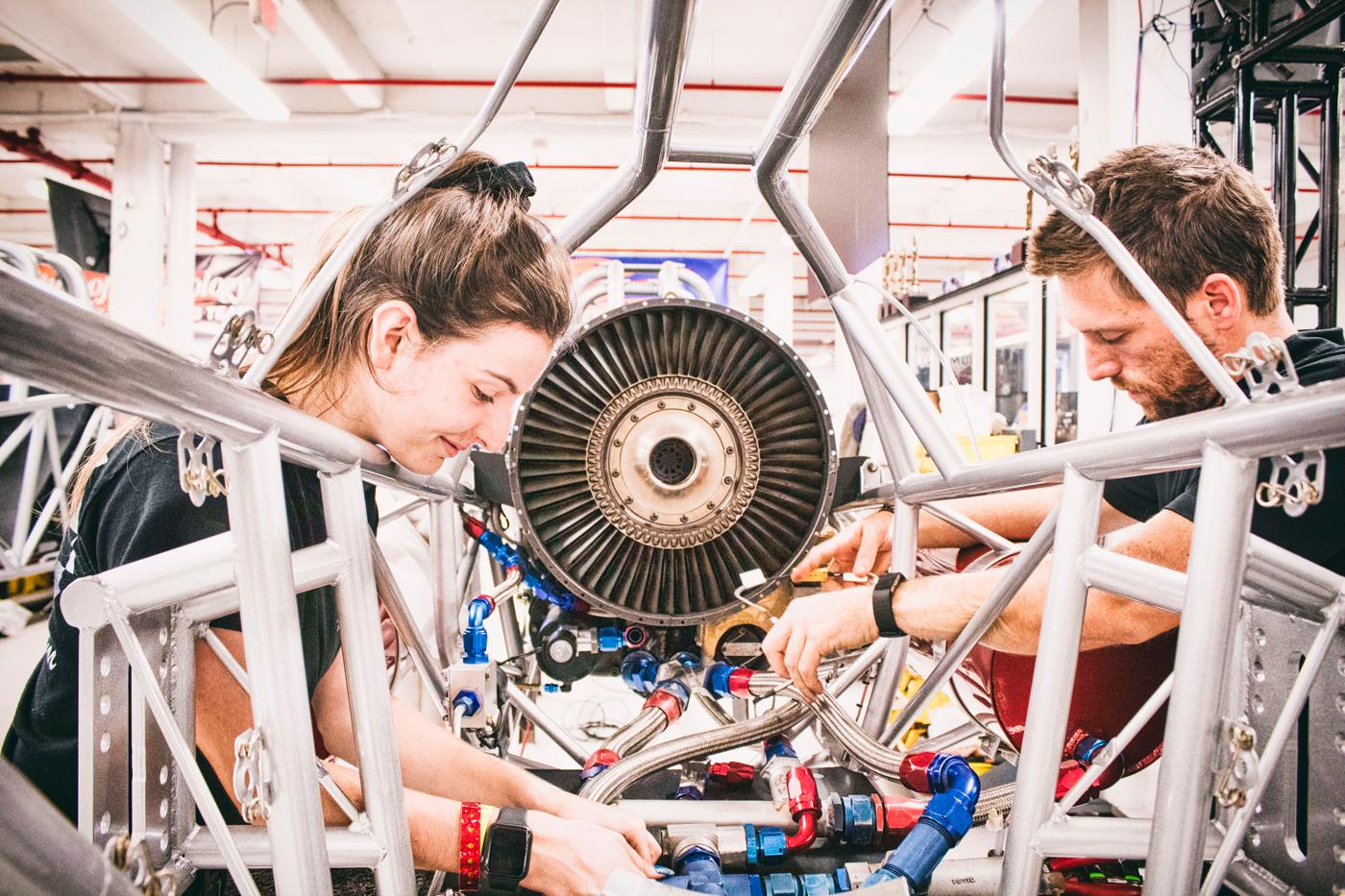
Science, technology, engineering, and math (STEM) programs aimed at youth are crucial for the future of motorsports.
Attempting to predict the future is a fool’s game, but even so, it doesn’t hurt to prepare for whatever may come in the years ahead. For the motorsports industry, a big part of preparing for the future is making sure younger generations are a part of it. Assuming the next generation of mechanics, fabricators, designers, and technicians—and fans—is just going to show up the same way previous generations did is a risky business.
This is not just a problem for the racing industry. Many a graybeard in the skilled trades has looked around the shop floor at his aging coworkers and wondered where the young replacements were going to come from. But in motorsports in particular, ensuring those future jobs are filled will require young people with education and training in science, technology, engineering, and math, a combination given the shorthand of STEM. (Some programs include the arts in the mix, creating a STEAM acronym.)
If steering youth toward STEM careers sounds like a big job, it is. After decades of telling young people that keyboard professions in office settings were the only path to success, sparking a rebirth of STEM skills with practical applications is a challenge on a societal scale.
Fortunately, there are many programs run by motorsports organizations both large and small that are focusing on STEM education for young people. These organizations approach the problem from a variety of angles, but the first step is simply spreading awareness, because most young people have no idea how many career paths are available in racing.
“There are so many professional careers that exist within the industry. I believe at any given NHRA event they always say there are about 3,000 working professionals,” said John Baadilla of Launch—Motorsports Careers for the National Hot Rod Association, Glendora, California. “You think of the sport of drag racing, you don’t realize how many different careers come out of this. It’s not just about driving the race car.”
The NHRA has taken a two-pronged approach to the issue of attracting the interest of the next generation. The sanctioning body’s YES (Youth and Education Services) program, established in 1989, aims to introduce STEM concepts to school-age children at NHRA national events, while the NHRA Launch—Motorsports Careers seeks to pair motorsports employers with young people with a passion for racing who are looking to break into the industry.
Simply introducing children to motorsports is step one, even in racing hotspots like Indianapolis, Indiana, where NXG Youth Motorsports, a 501c3 non-profit organization, is based. NXG uses racing for STEM education, life skill development, and exposure to racing industry careers, primarily aimed at African-American youth and other minorities.
“I did a survey when we started doing this to see how many kids had ever come into the Indianapolis Motor Speedway, because we were doing our classes both at the Speedway on a parking lot and at the state fairgrounds on a parking lot,” said Rodney Reid of NXG Youth Motorsports.
“Many, many more kids, I think it was like 80% of our students, had been to the state fairgrounds, and less than 50% had ever been inside the Speedway,” Reid said. “Even at that, they had been there maybe for like a Carb Day or qualifying. They hadn’t gone to the race. So we found there’s this big gap between them understanding racing and being exposed to it from just the pure enjoyment of it—the racing enthusiast’s perspective—all the way to, ‘Well, what do I do with this? I’m not going to be a racer. Is there anything I can do with this?’ We thought, ‘Let’s talk about careers—engineering, mechanics, PR people, communications. You can do that and be involved in motorsports, and you don’t have to be a race car driver. And you also get paid as opposed to paying.’”
Larsen Motorsports runs a jet drag car program out of its Palm Bay shop on Florida’s Space Coast, as well as offering design, engineering, fabrication, and restoration services. The organization established the Blazing Trails STEAM education non-profit, while also running an internship program at Larsen Motorsports for Florida Tech students. “These students are green. Some of them have never touched a tool before in their lives,” said Elaine Larsen. “It just depends. We work with aviation maintenance students. We work with kids who just want to turn wrenches. And we work with some troubled teens as well. I think motorsports is opening up their doors, giving kids a shot.”
Building Programs
Of course, deciding to have a STEM program is one thing. Establishing curriculum and overcoming the obstacles is something else entirely.
“Our curriculum is very much focused and driven by the industry,” Larsen said. “What is the industry looking for? What is Don Schumacher looking for? What is John Force looking for? What is Jack Roush looking for, or Tesla, or SpaceX?
“What we do with Blazing Trails is we actually go to the students. We travel to their schools, or we go to a career fair or we go to an educational outreach event. We engage them,” Larsen continued. “What I like to do is give them different positions in the motorsports family because, obviously, we’re all about motorsports. We’re all about drag racing. We do the engineering, fabrication side of things. We do the business side of things, the marketing and forming a team and what that takes. And then putting the team together—crew chief, truck driver, and so on. So during the program we put them in all these different positions and then we switch after about 10 or 15 minutes, and they learn about what that team member would do on a motorsports team. We actually build one and then we rotate. Everyone gets a chance to see what a fabrication job would look like. Sometimes we let them strike an arc and they weld with our Miller welders. Sometimes we are digitally manipulating a race car or building it and designing it, running CFD [computational fluid dynamics] analysis on it. They really get immersed from the full concept-design-fabrication to implementation and taking it to a track. I love that part. That’s Blazing Trails.”
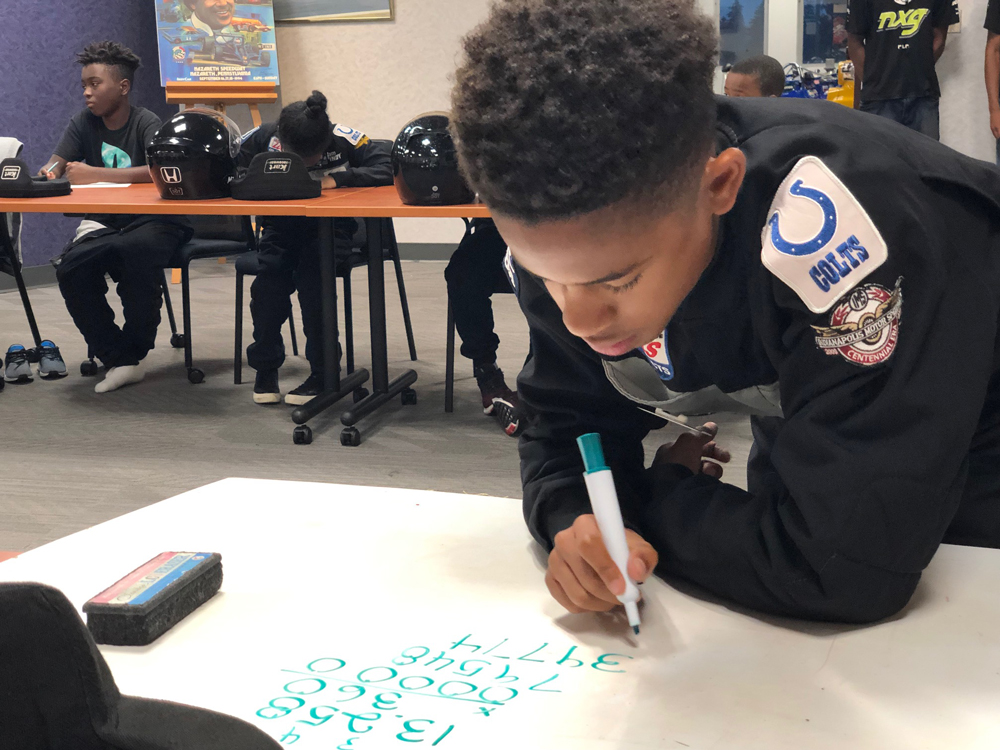
Loxley Browne established Athena Racing, a girls-only, 6th–12th grade STEM education program in April 2019 in San Diego, California. Athena Racing’s course material is presently 100% online, organized around summer “camps,” with plans to incorporate a kart racing element in the future.
“This is all very in-real-life driven. This is what is needed in the business world,” Browne said. “I’m very connected into business. When you look at the curriculum that’s out there in the schools, it has to get through all these major approval processes. By the time it’s approved, it’s so outdated it doesn’t actually mean anything anymore. So I’m bringing in industry experts, and we’re focusing on one little nugget of information that’s going to spark the curiosity in these girls. If this is something they want to do and explore more, then they’ll either come to me and say, ‘Let’s build this out and start doing more,’ or they’ll find a way to get the knowledge themselves. Everything I’m doing is basically showing them the opportunities that are available.”
At NXG, the curriculum is divided into five levels: Road Ready, which is an introduction to motorsports; Pressure Points; Funding Fun; Track Tools; and Race Ready.
“We came up with three foundational aspects of the program,” NXG’s Reid said. “We use go-kart driving and motorsports as a tool to teach life skills and life skill development, to teach and apply STEM education, and to have exposure to automotive- and motorsports-related careers. We knew that a racing school was a real necessary piece of the skill set, that you needed to have an education both in the classroom as well as on track.”
Reaching the kids at the right age was also important for NXG. “The idea was that we would work with fifth-graders. I think you develop your motor skills at around 10 years old,” Reid said. “People could argue all day, ‘Start karting when you’re five years old, or six years old.’ I truly believe that we could do as much with a 10-year-old starting in karts, who has never been in anything motorized, and within a few weeks we could have them doing just about as well as someone who started when they were five.”
The NHRA’s YES Program is one of the largest STEM outreach initiatives out there, and also one where plenty is packed into a short time period. The program consists of field trips that schools can take in conjunction with NHRA national events. Typically, students will arrive on a Friday morning, where they will assemble at a special midway area set up with displays. Then, with presentations every 30 minutes, they will hear from spokespeople and have panel discussions with drivers, crew chiefs, and partner representatives.
“Each one tells their narrative of how they got to where they’re at,” Baadilla said. “They talk about how science, technology, engineering, and math play a role in their career. They talk about all the careers and opportunities that exist in this industry. There’s a little bit of motivational, positive speaking about making good life decisions, setting goals for yourself, things like that.”
After the presentations, student receive tickets to the race, where they can walk the pits, see cars up close, interact with drivers, or go into the grandstands to watch the races. “There’s no charge whatsoever for any of these things. All they have to do is provide their transportation,” he added.
Big or Little?
Determining the optimum size for a STEM program depends on the institution running it. For some, small and focused is better. For others, funding is a limiting factor to the size of the program. Others are intended to reach as many students as possible.
Brian Tocci of Larsen Motorsports works with the Florida Tech interns at the racing shop. “Working on the race team, the actual hands-on, day-to-day stuff, smaller works for us,” Tocci said. “We’re a small business like a lot of race teams. We’re five full-time employees, and we manage all these students. They work part-time around their schedules. They go to Florida Tech full-time while they work our internship part-time. But the Blazing Trails side, we’ve done anything from 20 students all the way up to a couple hundred at a time. It’s not as in-depth where they’re designing something and doing a big fabrication build. It’s more quick stuff to get them interested in the actual program, get them interested in motorsports and engineering and different STEAM aspects.”
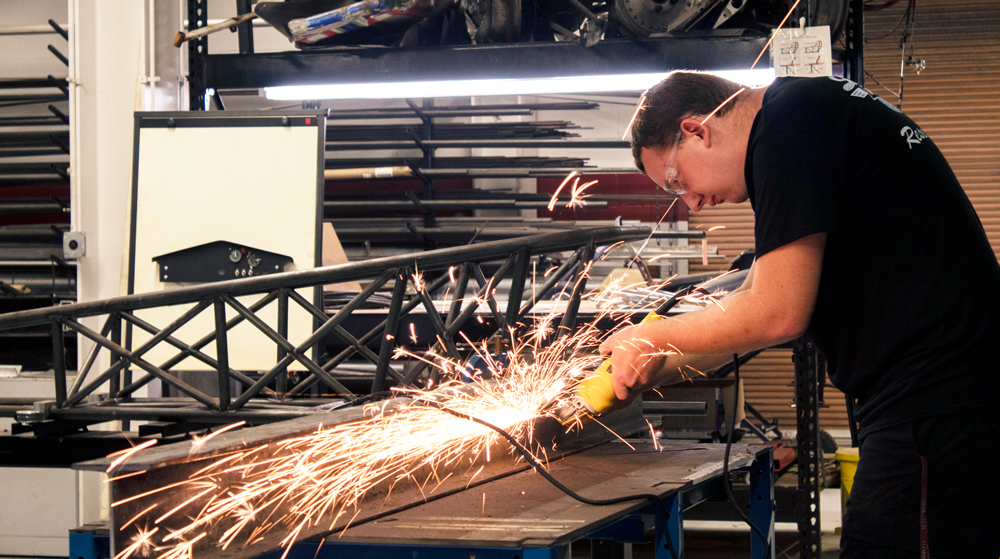
For NXG, smaller classes work better, but those numbers add up over time. “Scaling up for us would be just having a few more cohorts,” Reid said. “We max out at 20 kids per class, which is a pretty healthy class. We average about 16 kids per class, and I won’t put more than 10 karts on the course at any one time. It took us about six years to raise the money so we could buy all the equipment—trailers, karts, suits, helmets—in no small part thanks to Lucas Oil, which has been our title sponsor since the very beginning. Once we got all the assets in 2006, we had our first class. We started working with girls and boys. We’ve had about 2,300 students in 15 years, and about 26% of our participants have been girls.”
The NHRA currently has several partners in the YES program, including Ford, Mopar, and Western Technical School. Reaching as many students as possible is one of the goals. “As time goes on, more and more companies are realizing that the next generation, that’s the future right there. Those are the people who are the future workforce, our future consumers,” Baadilla said. “In any sport you’re trying to get that younger demographic, and we have a program where we routinely get (pre-COVID), year in and year out, 30,000 to 35,000 students to come to these events. What greater way can you convey your message and your objectives to that target market? And do good for the community and something positive for that age group?”
Athena Racing started small but has grown quickly, with ambitious goals for expansion. “We have grown 1,500% in the past six months,” Browne said. “We are reaching girls across the United States, and this year for our summer camps we’re actually setting up education hubs in South Africa, Costa Rica, Nepal, and Vietnam. So we’re going to be reaching girls around the world.
“Here in the United States it’s primarily the middle-class girls, 6th through 12th grade,” she continued. “Their parents are very professional, career-minded parents, and they understand the value of learning as much as they can right now, perfecting their resume in high school so that they’re prepared for the next steps, whether it’s college or an apprenticeship. And I’m setting up feeder programs with colleges and companies to start sending our girls into them.”
Measuring Wins, Overcoming Obstacles
STEM-oriented organizations have many different ways of measuring the effectiveness of their programs.
“First, we do an entrance exam and an exit exam, and we see if they were able to garner some of the principles,” NXG’s Reid said. “Unfortunately, we don’t have them long enough in a year like you would for a school classroom. At best, if a kid takes all five classes that we offer, we’re going to have them for 40 hours in a summer.
“We also look at other things we were able to influence those children to do, maybe extracurricular things,” Reid continued. “Probably the single greatest feedback we get from the parents is that they feel their children are more confident. I get that a lot.”
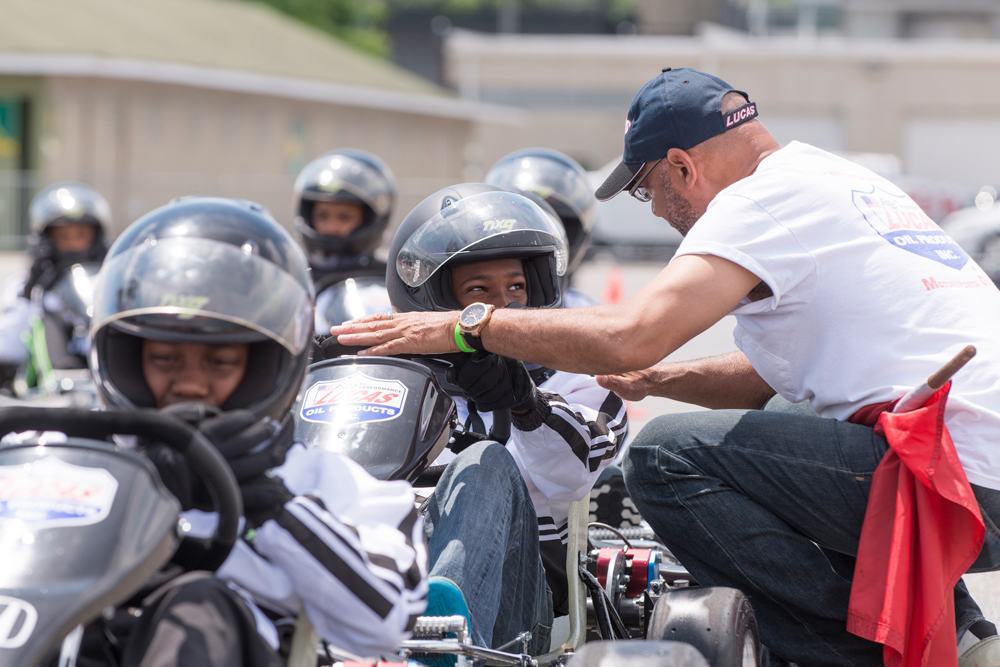
The NHRA works with education professionals to help evaluate and evolve the YES Program. “We’re always tracking growth. We’re seeing new schools participate, we’re seeing more students come out,” Baadilla said. “We have an advisory committee of teachers that we work with and bounce ideas with, and they give feedback on the things we’re doing. They come out to the races from an educator perspective to let us know things that are good, or things we should maybe think about that would appeal to the education sector and be of greater value to students.”
For Browne at Athena Motorsports, simply asking the girls what they think is one of the best evaluation tools. “We do surveys with the girls all the time. After each camp, they get a survey that they answer,” she said. “And then we are always just measuring the effectiveness of our courses. I talk with them as we’re going through and doing different workshops and such so that we improve it so that it is something that keeps them interested. And we always have our goals that we have to meet as a board for what we want to get accomplished. We’re always measuring everything.”
Although the responses to these youth-oriented STEM programs has been almost universally positive, the people we spoke with say there are still obstacles to overcome. “One of the concerns a lot of schools have, even more so now, is having the budget for them to take a field trip to come out and do things,” said NHRA’s Baadilla “We try to work with them and show them that this is worth their while. If a school, a class, can take only one field trip a school year or semester, and they have only a certain amount of budget, in their eyes, why should they choose us as the one event they’re going to bring their students out to?”
Reid at NXG Youth Motorsports reported that a lack of exposure to racing among his students takes time to overcome. “The biggest one is the cultural divide. When we think about stick-and-ball sports, that happens in school. By the time a person gets to middle school, they’ve been exposed to basketball, football, baseball, track and field, and soccer. Some have even been exposed to lacrosse and field hockey and other things. But they’re not exposed to motorsports.”
Of those that have some motorsports experience, “there are families that are heavily rural and predominantly white, and they have been doing maybe sprint cars and midgets or other forms of racing,” Reid noted. “In the Black community, the highest form of racing that kids are exposed to would be drag racing. It’s not like you can go down to the corner like you can with a basketball and get into a pickup game. There’s so much more involved.
“The cultural divide is why the education piece is so important,” Reid continued. “Not just to tie into motorsports. That makes sense from a STEM perspective. But also, ‘What is racing?’ I have to teach that.”
The View Ahead
The global pandemic forced numerous changes on the various STEM programs, but the innovations that were launched have the potential to benefit even more students. “One of the initiatives that we started in the fall of last year—and it’s still being used right now—is the virtual program we created,” NHRA’s Baadilla said. “A lot of the content and a lot of discussion points that a student would see at a live YES Program presentation we now are sending to schools. They can sign up and use it in the classroom, teachers can assign it as homework, they can watch it together as a class, if they’re distance-learning they can watch it from home. Basically, we’ve created video content with the same type of material that we cover at our events.”
These moves helped YES soldier on during the pandemic shutdowns, but also opened the door for more students to participate. “When you sign up for the virtual program, you still get the ability to receive a free race ticket to come out on the Friday of the event,” Baadilla said. “This has also allowed us to promote this all throughout the country. In a traditional YES Program, your school has to be at least a driving distance proximity to attend an event. But now, we’re using this throughout all 50 states. Schools and areas that don’t have an NHRA National event are starting to use this video content in their classrooms and see value in it.”
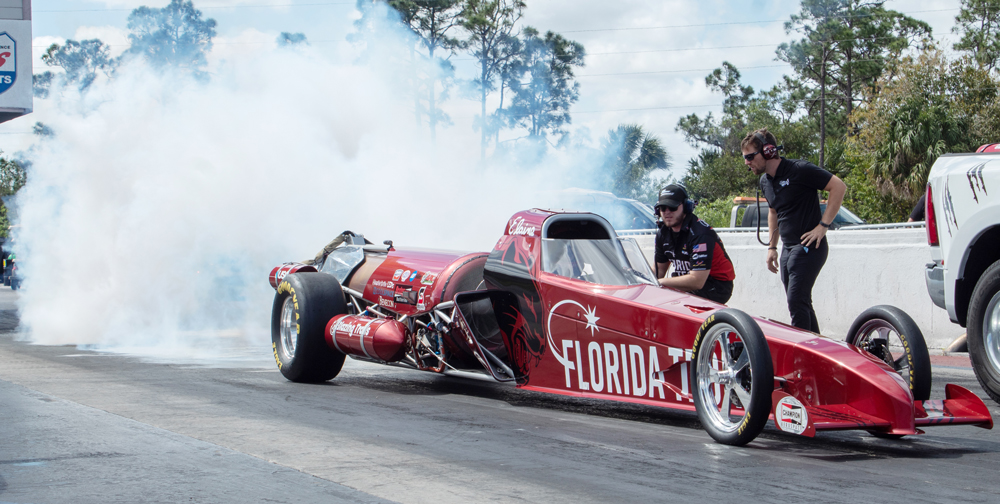
For NXG, a slow but steady expansion beyond Indianapolis is on the horizon. “I thought if we were in every market, every urban market that IndyCar would run, then we could in turn have maybe this reciprocal relationship where we bring the community to IndyCar and motorsports, and then motorsports and IndyCar to the community,” Reid said. “Expanding into other markets was always part of our desire. This year we’re having an opportunity to do that in Detroit.” NXG introduced its first pilot program at the Chevrolet Detroit Grand Prix on June 12 and 13. More than 100 kids had applied in just the two weeks after the program was announced. Reid added, “We’re talking to other markets as well.”
According to our sources, enthusiasm for racing exists among young people. They just need a guiding hand to find how they can fit into the picture. STEM exposure and education are crucial to helping the next generation find its way.
“I know people say, ‘Is there a passion for motorsports?’ Oh my gosh, heck yes,” said Larsen. “Every single time we go to a race, every time we go and engage schools and colleges, the passion for racing exists. It’s just helping students find a path, a clear path to how they get to what they want to do. And that just equals time and money. There’s only one Larsen Motorsports, but there are so many other companies that could be doing the same things that we do in their local school districts and their local colleges.”
Personal Best
There are any number of practical reasons to get the next generation interested in STEM skills, but for many of the people we spoke with for this article, the motivation for establishing these programs was deeply personal.
“It was born out of frustration,” said Rodney Reid of NXG Youth Motorsports, Indianapolis, Indiana. “I was involved in motorsports in my 20s and got involved with a Super Vee team. We were doing some Formula Atlantic and some Formula Fords, but in Super Vee in particular we were able to raise funds to work with Budweiser.” At the time, he was working with Charles Wilson, who was hoping to move up from Super Vee to IndyCar and become the first African-American to run the Indy 500. “He and I became fast friends, and I did onsite promotion as well as sponsorship-seeking for our team, Scorpion Racing.”
That attempt to move to IndyCar ended in bitter disappointment for Wilson and Reid, and the bad blood from that experience caused them to leave the motorsports field for a decade. But eventually, they had a re-think. “Why are we letting this get the best of us? We do not want to have another little Black boy or girl with aspirations of racing to have the same frustrations that we went through,” Reid said. “So we said, ‘We want to do something for the next generation of racers,’ so we started an organization called NEXGENERACERS. And that’s what NXG stands for.”
For Loxley Browne, the motivation to create something like Athena Racing was burning inside her all along. “This is a program that, basically, the spark just fired up inside me. I had been volunteering at the La Jolla Concours and listening to all my friends talk about racing. Then there’s everything I know about the business world, the start-up world, and entrepreneurship. There’s the fact that I used to race SCCA before I became super serious about business. And I was also working with the STEM ecosystem here in San Diego. It was like this perfect storm happened. I put all of the puzzle pieces together and decided, ‘I’ve just got to make this happen.’
“This is for those middle-class girls who have two parents who work,” she continued. “Those who come from money, the higher class, they don’t need this. They go out and get their own race car and do whatever they want to. And those who are in the lower class, they already have so many programs out there trying to get in front of them. I grew up in that middle-class family where things were tight. Each one of us had our things we had to do after school, but there was no extra money for anything else.
“The middle class takes care of so much in the United States,” Browne continued. “This was my way, kind of personally, of trying to give back to those parents who are just stressed beyond belief and to give them a community for their little girl to engage with.” —Steve Statham
YES, Please
The NHRA’s YES (Youth and Education Services) Program is one of the pioneers in the STEM education field, having been established in 1989. It was put into motion by Gary Densham, a Funny Car driver who was also a high school teacher. “He saw a great correlation between how he could implement all the principles that they utilized at the race track, and how that could be utilized in the classroom, whether it’s an auto shop class, a science class, or a math class,” said the NHRA’s John Baadilla. “There are so many applications of what goes on in the classroom that get used in the real world of NHRA drag racing. Densham, combined with NHRA and a committee of teachers in the Southern California area, worked together to create this program. It debuted in Pomona, California, the first-ever Youth and Education Services program, along with the Career Opportunities Fair, which actually still occurs at every Fall Pomona race.” —Steve Statham
SOURCES
–
Athena Racing
athenaracing.org
Blazing Trails
blazingtrails.info
Larsen Motorsports
elainelarsen.com
NHRA
nhra.com/launch
nhra.com/yes
NXG Youth Motorsports
nxgyouth.org
 MEMBERSHIP LOGIN
MEMBERSHIP LOGIN JOIN PRI
JOIN PRI


